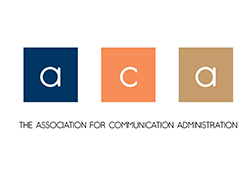Abstract
The purpose of this article is to briefly describe (a) a rationale for creating communication laboratories; (b) communication laboratory curricula and approaches; (c) development strategies for communication laboratories; (d) communication laboratory assessment, accountability, and research opportunities; and (e) communication laboratory issues and challenges. The article concludes with a list of guiding principles that lead to the successful implementation of communication laboratories. The communication laboratory is one educational strategy for addressing the issue of communication competency in the 21st century. Communication laboratories across the United States exist at schools such as Columbus State University, East Tennessee State University, Golden West College, Ithaca College, Luther College, San Jose State University, College of San Mateo, the College of William and Mary, Southwest Texas State University, and the University of Colorado at Colorado Springs. These laboratories were developed to meet critical institutional priorities, including enhancement of students' oral communication skills, helping students across the curriculum with identified communication skill problems, and developing academic programs to increase student persistence and retention to graduation.
Recommended Citation
Ellis, K., Shockley-Zalabak, P. S., & Hackman, M. Z. (2000). Communication laboratories: Genesis, assessment, challenges. Journal of the Association for Communication Administration, 29(1), 155–162.


